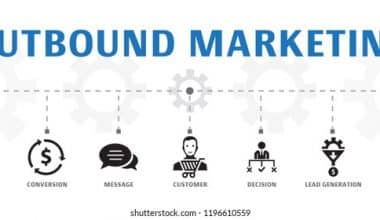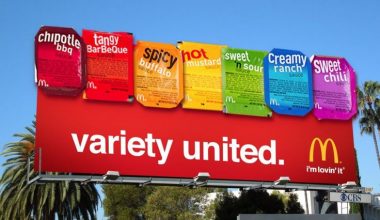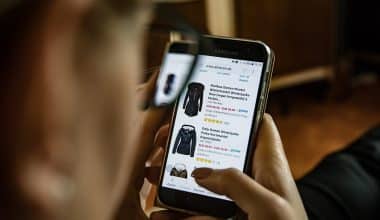Omnichannel marketing is an excellent example of a term whose essence has become lost in the shuffle. Most people believe it’s simply using more than one channel to promote your products and services to a certain audience. However, understanding the difference between omnichannel marketing and multi-channel marketing will help you think about marketing in a whole new light, allowing you to deliver the initial intention of marketing.
What Is Omnichannel Marketing?
Omnichannel marketing is the process of promoting your products or services to clients and prospects over various channels, platforms, and devices. Regardless of the interaction or channel, an omnichannel marketing campaign’s messaging, images and overall experience are consistent and relevant to the individual.
As a result, an omnichannel marketing strategy produces consistent messaging across channels. For example, an omnichannel marketing strategy would prohibit sending an SMS message about a specific product to someone who has recently purchased it.
The underlying data in omnichannel is automatically updated, causing your messaging across all channels to change as well. It creates a seamless purchasing experience from the first to the final touchpoint. Is there anything you’re still unsure of? This omnichannel example below may help to clarify the situation.
Omnichannel Marketing Example
- While shopping in-store, a customer receives an SMS message advertising a bargain or promotion.
- After exploring a website and adding a product to their online shopping cart, a customer receives a cart abandonment email.
- A customer who is seeing retargeting advertising for things they put in-app in their abandoned cart.
What Is the Difference Between Omnichannel Marketing and Multi-Channel Marketing?
The most significant distinction between multi-channel marketing and omnichannel marketing is the position of the customer in your plan.
Having a cohesive message across all media is what multichannel marketing entails. However, that message may or may not apply to each consumer. It may be relevant for the great majority, but it will not provide the kind of minute personalization that omnichannel marketing provides.
Personalization is an area where no other marketing tactic has yet to surpass omnichannel marketing. This is because it places your clients at the heart of the entire marketing structure. Your brand messaging adjusts to exactly what your client wants, including the channel they choose to communicate with at each touchpoint.
When you put your customer at the core of your marketing plan, every message is not just appropriate for the channel but also appropriate to where they are in the customer experience.
And, thus, the more interactions people have with your brand, the more of them they will want to have. This gives you access to an increasing amount of data. When that data is linked to a robust omnichannel marketing platform, it leads to improved personalization and, as a result, more sales and brand awareness.
How do you Create an Effective Omnichannel Marketing Strategy?
When it comes to theme park marketing, there is no better example than Disney’s ideal omnichannel strategy. Disney has made it easier for tourists to schedule their stay, check ride timings, book tickets, and so on without having to stand in a large line by using their website, smartphone applications, and Magicbands and cards. To develop such an omnichannel experience, you must have a flawless omnichannel marketing plan. Here is how you create yours
- Plan the customer’s experience: By analyzing their channels and their behavior, you can create a clear plan of how you want the experience to flow across all touchpoints.
- When strategizing, use data as a foundation: You will know how your customer behaves and may design a solution to meet their difficulties with the use of CRM data, social listening data, and customer internet search behavior. You may even reduce turnover by leveraging data.
- Choose the correct marketing automation tools: From strategy conception to execution, use the right marketing tools. Be sure to do a lot of research before making a decision.
- Make your company more customer-centric. This is a critical step because no plan or marketing tool can work until your personnel is taught to provide a consistent experience to clients.
What Is a Successful Omnichannel Strategy?
In order to provide a seamless experience for their customers across all channels, successful omnichannel strategies include components of sales strategy, digital marketing, and customer service.
Examples of Omnichannel Marketing
Now that you understand what omnichannel marketing is and how to develop an effective strategy, we’ll go into more detail about how you can employ it in your organization.
So, are you looking for ideas for your brand’s omnichannel strategy? Learn how these five industry leaders arrange consistent, targeted messages across their primary marketing channels.
#1. Disney
For a long time, Disney has understood the importance of providing a unified brand experience to its customers. Their website is mobile-friendly and responsive. Disney and its streaming platform work across many devices (TV, laptops, mobiles, tablets, and gaming consoles) with a consistent look and feel.
Their theme parks employ the same branding as the rest of their properties. While in the parks, you may also use your smartphone app to locate the attractions that most interest you and see their current wait times.
However, Disney’s MagicBands go a step further. You may use them to check-in at fast pass+ entries, enter parks, open your hotel room door, and more. They are safe, all-in-one devices that allow you to easily access the holiday plans and selections you’ve made with the My Disney Experience booking app. A MagicBand can even unlock special surprises across the Walt Disney World Resort that are designed especially for you.
#2. Sephora
Sephora associates internet purchases with in-store visits. While shopping, customers can use a tablet to access their “Beauty Bag” account. They can use digital tools to search for product specifications and virtually try on beauty products. Customers can save their favorite products to a wish list, which they can then purchase from within the app.
#3. Value City Furniture
To assist customers both online and in-store, Value City Furniture has introduced an “easy pass.” This saves all of their data in one location. If customers get a quote in-store, it will appear in their account if they decide to buy online later. The product data includes all of the information required by the customer to make a decision, such as the item’s dimensions, features, and product images.
While browsing the Value City Furniture website, customers may also create a wish lists. They can, however, put these up in-store to facilitate a purchase.
Value City Furniture likewise uses email to urge customers toward a purchase decision. For example, they may email prospective customers in-store to remind them of the “easy pass” system. They also send emails to customers who abandon their online shopping carts.
#4. Starbucks
Starbucks Rewards is an excellent example of omnichannel marketing. You can use the smartphone app to order ahead of time and pay at participating locations, as well as track your Stars and Rewards and whether you paid with cash, credit card, or Starbucks Card. You can also use it to search for stores, redeem offers, and do a variety of other things. Check and refill your rewards card by phone, website, in-store, or app. You may even top up your app balance while waiting in line at a Starbucks, and your transfer will be displayed in real-time.
#5. Walgreen’s
One of Walgreens’ primary tools for brand communication is its mobile app. They can check and renew medicines on the app instead of calling the pharmacy. They can also use the app to set up reminders for prescription renewals.
The drugstore has considerably reduced in-store pick-up wait times by making wise use of the Walgreens app.
Customers can earn loyalty reward points in a variety of ways, including making in-store or online purchases; linking fitness apps to the Walgreens app and tracking activity; completing health information surveys; getting in-store immunizations; and more. When a customer accumulates sufficient credits, they can redeem them in-store or online.
Tools for Omnichannel Marketing:
When considering an omnichannel marketing strategy, there are a lot of things to consider. You need marketing software that makes it easy to put your new strategy into action once you’ve decided it’s the best course of action for your company.
Brands who want to take advantage of all that omnichannel marketing has to offer can use platforms like Omnisend. It contains the important components necessary to make it work, such as:
- Email marketing campaigns
- SMS advertising
- Notifications using web push
- Social media, via Google and Facebook ad audience sync
- Intuitive, e-commerce-tailored segmentation
- Sending messages based on a subscriber’s action, with the flexibility to combine various channels in the workflow
- Data reports to help you evaluate your work.
The Advantages of Omnichannel Marketing
The business as a whole believes that “omnichannel” is the true north. While having and enabling numerous channels isn’t a bad thing, the goal should be seamless unification and integration, as well as automatic execution.
An effective omnichannel marketing strategy can help your company achieve the following advantages:
#1. Increase Customer Loyalty
Consumers spend their money with companies they respect and believe in. For example, omnichannel marketing activities ensure a consistent experience across all platforms while also providing a unique service for each audience member. This strategy enhances the total customer experience, resulting in greater customer loyalty and retention.
#2. Build Brand Recall
The emphasis on cross-channel consistency in omnichannel marketing guarantees that your customers view your brand consistently across platforms and devices. This consistency helps your buyers remember your brand. A strong sense of brand memory will boost your customer base’s likelihood of purchasing.
#3. Obtain Revenue Increases
Omnichannel methods increase customer loyalty, improve brand memory, and encourage repeat purchases. Through content personalization and expression marketing, these initiatives assist brands in both retaining and attracting new customers. More customers equal more business and, naturally, more revenue.
What Is Another Word for Omnichannel?
Multichannel is another word for omnichannel. A multichannel (or “many channel”) strategy just means that customers can contact and interact with a business in more than one way.
Omni channel marketing FAQs
What are the channels in omnichannel?
Display advertising, search engines, social media, referral websites, e-mail, and mobile marketing can all be considered independent channels in today’s omnichannel world because they allow for one-way or two-way communications.
What is omni channel vs multi channel?
The way brick-and-mortar stores and a company’s internet operations work together is sometimes referred to as omnichannel retail. Multichannel retail refers to a company that has both physical shops and online stores, but the operations are independent channels of the broader firm rather than integrated.
What is the difference between omnichannel and ecommerce?
Both multichannel and omnichannel e-commerce use various channels to engage customers throughout the customer experience. Multichannel, on the other hand, is more channel-focused, whereas omnichannel is more customer-centric.
What is omni channel distribution?
In a nutshell, omnichannel distribution is a strategy in which retail, wholesale, and online channels mix to provide retailers with a unified experience across different channels.
How do you build an omni channel marketing strategy?
Steps to Build an Omnichannel Strategy
- Ensure that your website is mobile-friendly.
- Determine which channels your clients use most regularly.
- Create a journey map for your customers.
- Match your content to the appropriate marketing channel.
- Divide your audience into segments.
- Make the most of shoppable posts.
- Offers cross-channel client service.
Related Articles
- RETURN ON EQUITY: Meaning, Formula & How to Calculate (+Quick tools)
- MOST VALUABLE BRANDS 2022
- NETFLIX COMPETITORS: Who are they? (Competitor Analysis & Stock)
- MERGERS: Types and Examples of Business Mergers
- Mergers and Acquisitions 2022: Differences and Examples
- MARKETING SERVICES: Digital Marketing Services & Contracts
- OMNICHANNEL RETAILING: What Is It & Why Is It Important?






